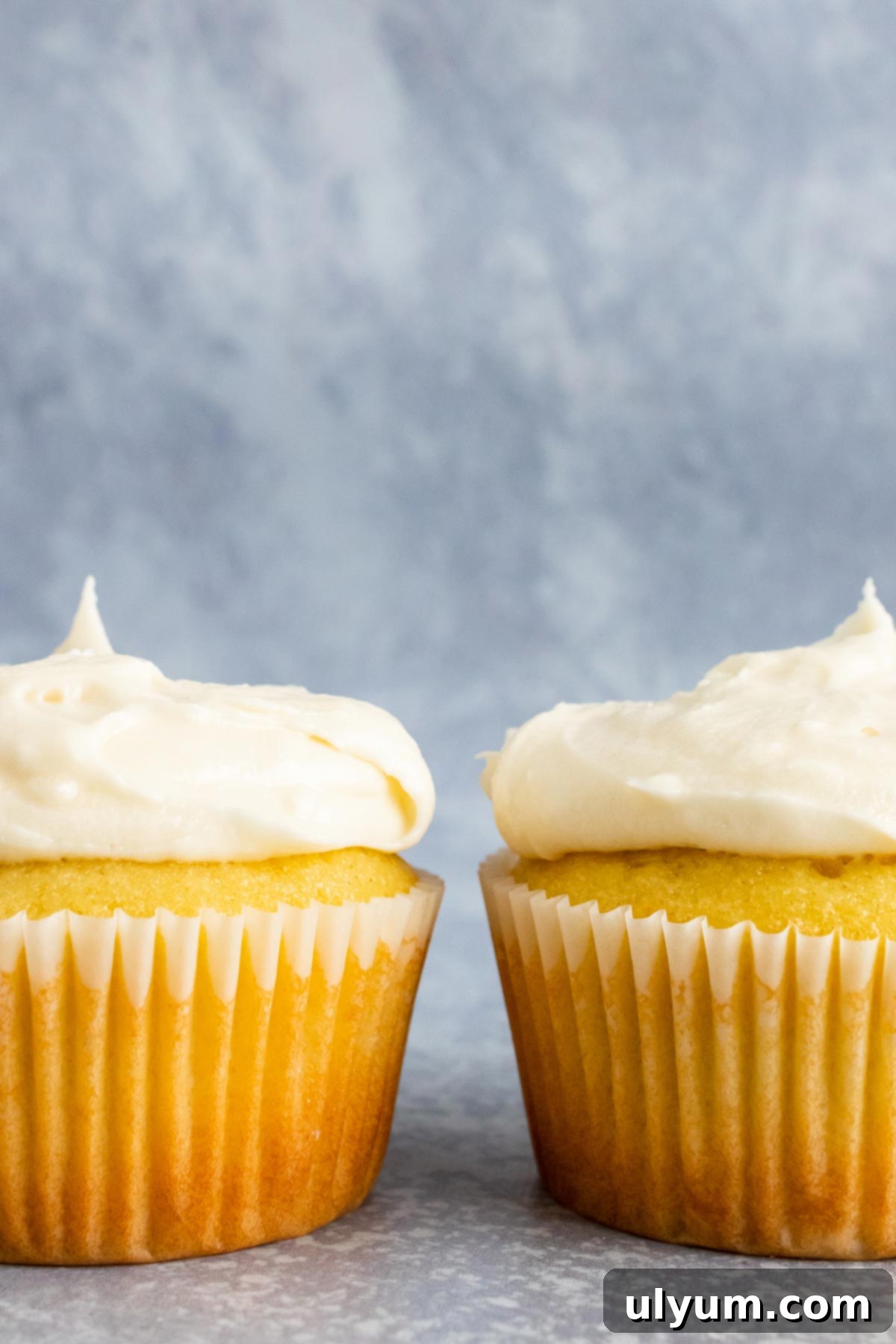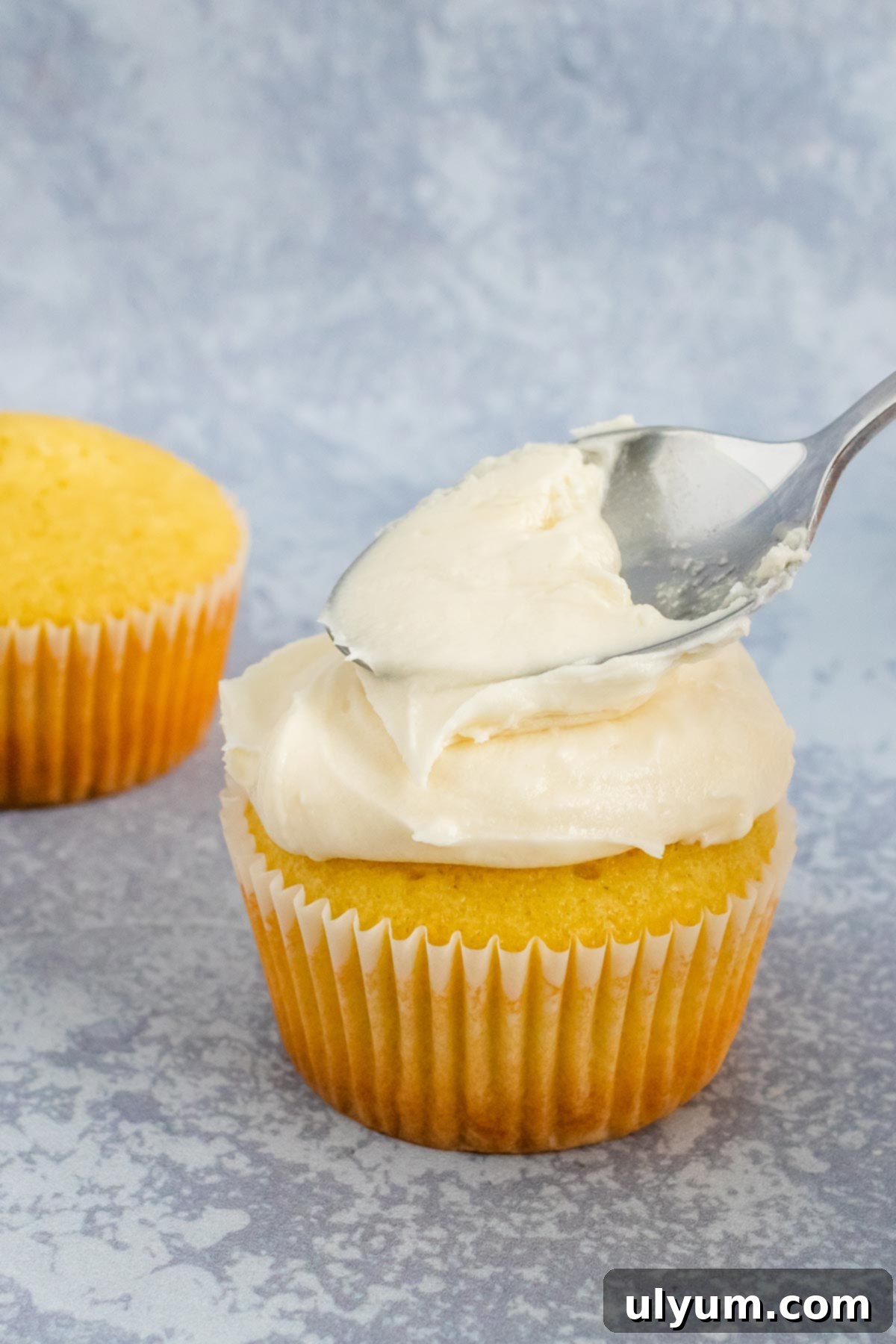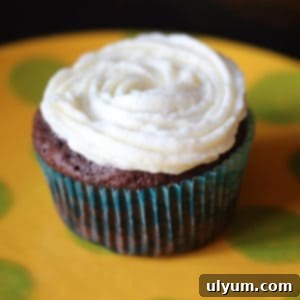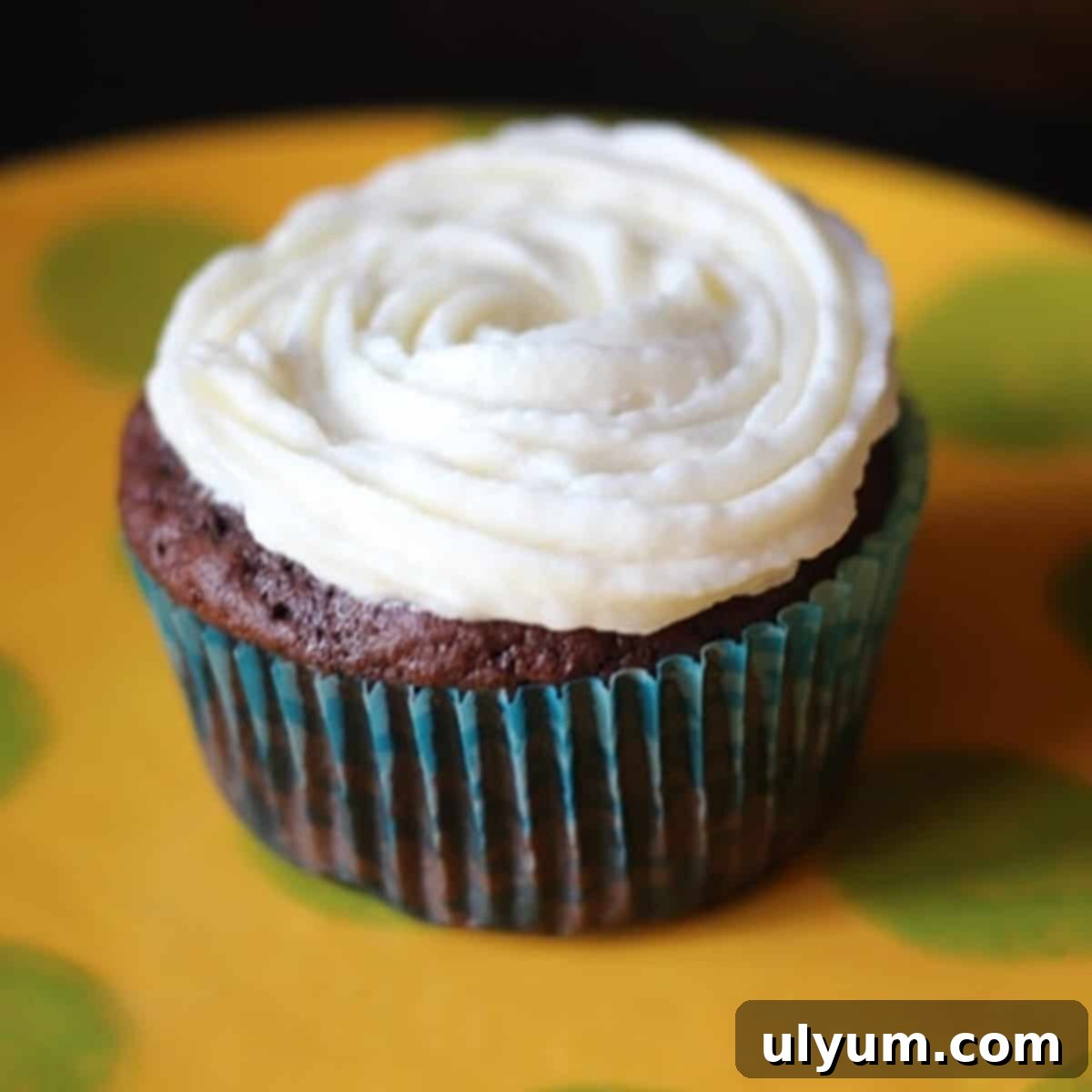The Ultimate Guide to Classic American Buttercream Frosting: Easy, Fluffy, and Versatile
Discover how to make the perfect **classic American buttercream frosting** with this easy-to-follow recipe. Crafted with essential pantry staples like confectioner’s sugar, rich unsalted butter, pure vanilla extract, and a touch of milk or cream, this recipe guarantees a smooth, fluffy, and undeniably delicious frosting every time. Whether you’re a seasoned baker or just starting, this guide will equip you with all the tips and tricks to master this beloved dessert topping.
American buttercream frosting is more than just a sweet topping; it’s a culinary staple that has graced countless cakes, cupcakes, and cookies for generations. Its simple preparation and delightful texture make it a go-to choice for home bakers and professional decorators alike. Unlike other buttercreams such as Swiss meringue buttercream or Italian meringue buttercream, which rely on egg whites, or French buttercream made with egg yolks, American buttercream achieves its creamy consistency solely from the harmonious blend of butter and powdered sugar. This article will delve into everything you need to know about crafting the perfect batch.
Looking for a smaller portion? Check out my scaled-down, small-batch version, Buttercream Frosting for Two Cupcakes, perfect for a cozy dessert for two.
This post contains affiliate links. As an Amazon Associate, I earn from qualifying purchases.
Why You’ll Love This American Buttercream Recipe
- Effortlessly Easy: This is a classic, fool-proof, and simple recipe that consistently delivers perfect results. Ideal for beginners, it requires minimal baking expertise and uses straightforward techniques.
- Infinitely Customizable: The beauty of American buttercream lies in its versatility. Easily add different flavors, extracts, colorings, or even fruit purees to match your taste, dessert theme, or special occasion. Explore endless creative possibilities!
- Simple, Accessible Ingredients: You won’t need to hunt for exotic items. All the ingredients for this homemade frosting are readily available at any grocery store and are likely already pantry staples in your kitchen.
- Light and Fluffy Texture: When prepared correctly, this buttercream transforms into a wonderfully light and airy frosting, perfect for piping intricate designs or spreading smoothly.
- Holds Its Shape Beautifully: This frosting is firm enough to hold its shape for elaborate cake decorating, making it ideal for piping swirls, rosettes, borders, and more without losing definition.
Essential Ingredients for American Buttercream
Crafting the perfect American buttercream requires just a few key ingredients. Each plays a vital role in achieving that desirable creamy texture and sweet flavor.
- Powdered Sugar: Also known as confectioner’s sugar or icing sugar. This fine sugar is crucial for the smooth, melt-in-your-mouth texture of the frosting. Unlike granulated sugar, its fine particles dissolve easily into the butter, preventing a grainy consistency. For the smoothest result, sifting your powdered sugar before adding it to the butter is highly recommended to remove any lumps.
- Unsalted Butter: Using unsalted butter allows you complete control over the flavor profile of your frosting. Starting with **room temperature butter** is paramount. If the butter is too cold, it won’t cream properly with the sugar, leading to a lumpy or curdled frosting. If it’s too warm (melted or greasy), the frosting will be too thin and won’t hold its shape. Aim for butter that yields slightly when pressed but still feels cool to the touch.
- Vanilla Extract: This provides the signature classic flavor. While any vanilla extract will do (pure vanilla extract offers a richer taste, imitation vanilla extract is more cost-effective), use clear vanilla extract if you desire a pure, brilliant white frosting for specific decorating needs.
- Milk or Heavy Cream: A small amount of liquid is essential to achieve the perfect spreadable consistency. Whole milk is a common choice, but heavy cream will result in a richer, slightly thicker, and even creamier frosting. You can also use half-and-half or even a plant-based milk alternative for dietary preferences, adjusting the amount as needed.
- Pinch of Salt (Optional but Recommended): A tiny pinch of fine salt can enhance the flavors and balance the sweetness of the frosting, preventing it from tasting overly sugary.
Step-by-Step Instructions for Fluffy American Buttercream
Follow these simple steps to create luscious, light, and fluffy American buttercream that’s perfect for any dessert:
- Cream Butter and Sugar: In a medium-sized mixing bowl or the bowl of a stand mixer fitted with a paddle attachment, combine the softened unsalted butter and sifted powdered sugar. Begin mixing on low speed, gradually increasing to medium-low. This initial step is crucial for incorporating the sugar into the butter without creating a cloudy mess. Continue mixing until the butter and sugar are thoroughly combined and the mixture looks crumbly but moist. Scrape down the sides and bottom of the bowl with a spatula to ensure everything is evenly mixed.
- Whip for Creaminess: Increase the mixer speed to medium and continue to beat for approximately 3-5 minutes. During this time, the mixture will transform into a creamy, light, and spreadable consistency. The butter will lighten in color as air is incorporated, which is key to a fluffy frosting. Don’t rush this step; proper aeration is what makes American buttercream so delightful.
- Add Flavor and Adjust Consistency: Reduce the mixer speed to low. Add the vanilla extract and 1 tablespoon of milk (or heavy cream). Beat for an additional minute until fully combined. Observe the consistency: if the frosting appears too thick or stiff, gradually add more milk, one teaspoon at a time, until you reach your desired consistency. For piping, you might want a slightly stiffer frosting, while for spreading, a softer consistency is ideal.

Essential Equipment for Homemade Buttercream
While this American buttercream recipe is incredibly simple, having the right tools can make the process even smoother and guarantee optimal results.
- Electric Mixer: To achieve that wonderfully light and fluffy consistency, an electric mixer is highly recommended. You can use either a reliable **hand mixer** for smaller batches and convenience, or a more robust stand mixer for larger quantities or for hands-free mixing.
- Mixing Attachments: If using a stand mixer, you can use either the **whisk attachment** for a lighter, airier frosting or the **paddle attachment** for a slightly denser but still smooth and creamy texture. The paddle attachment is often preferred as it prevents over-aeration which can lead to too many air bubbles.
- Rubber Spatula: Essential for scraping down the sides of the bowl periodically, ensuring all ingredients are fully incorporated and the frosting is smooth and consistent.
- Sieve/Sifter (Optional but Recommended): For sifting powdered sugar to prevent lumps, leading to an even smoother buttercream.
Pro Tips for Perfect American Buttercream Every Time
- Start with Softened Butter: This cannot be stressed enough. Cold butter will result in a lumpy, difficult-to-mix frosting. Butter that is too soft or melted will make a greasy, runny frosting. The ideal temperature is around 68-70°F (20-21°C), where it’s pliable but still cool.
- Sift Your Powdered Sugar: This simple step makes a huge difference. Powdered sugar can clump easily, and sifting it before mixing ensures a super smooth, lump-free frosting.
- Gradually Add Powdered Sugar: To prevent a cloud of sugar from flying out of the bowl and creating a mess, add the powdered sugar in two or three additions, mixing on low speed until each addition is incorporated before adding the next.
- Whip for Fluffiness: Don’t under-mix! Once the butter and sugar are combined, increase the speed and beat for a good 3-5 minutes. This incorporates air, making the buttercream light, fluffy, and increasing its volume.
- Add Milk Slowly: The amount of milk or cream needed can vary slightly based on humidity and butter consistency. Add it one tablespoon or teaspoon at a time until you reach your desired consistency. You can always add more, but you can’t easily take it away!
- Scrape the Bowl Often: Butter and sugar tend to stick to the bottom and sides of the bowl. Stop your mixer periodically and scrape down the bowl with a rubber spatula to ensure all ingredients are fully mixed.
- Adjust Consistency for Use: For piping intricate details, you’ll want a slightly stiffer frosting. For a smooth, spreadable layer on a cake, a slightly thinner consistency might be preferred. Adjust with small amounts of milk or powdered sugar as needed.
- Coloring Buttercream: Use gel food coloring for vibrant colors without thinning the frosting. Add a tiny amount with a toothpick and mix until desired shade is achieved.
- Taste and Adjust: Before you declare your buttercream complete, give it a taste! You might want to add an extra pinch of salt to balance the sweetness, or a bit more vanilla for a stronger flavor.
Versatile Uses for Your Homemade American Buttercream
This classic American buttercream isn’t just delicious; it’s incredibly versatile and can elevate a wide array of baked goods.
- Cake Decorating: American buttercream frosting is a dream for cake decorators. Its stable consistency makes it easy to pipe intricate designs, create smooth finishes, and add beautiful borders to everything from simple birthday cakes to elaborate wedding cakes. It holds its shape well, ensuring your decorative efforts stay pristine.
- Cupcake Decorating: Perfect for transforming plain cupcakes into edible works of art. Whether you’re aiming for elegant swirls, delicate rosettes, or fun designs, a piping bag and your favorite tip will make quick work of decorating any flavor of cupcake (classic vanilla cupcakes are my personal favorite!).
- Filling for Layer Cakes: Beyond just frosting the exterior, this creamy buttercream makes an excellent filling for layer cakes. Its richness complements various cake flavors, from chocolate and vanilla to red velvet and lemon, adding a delightful layer of sweetness and texture between each cake tier.
- Frosting for Brownies and Cookies: Don’t limit yourself to cakes and cupcakes! This vanilla buttercream frosting can also be used to frost fudgy brownies, classic sugar cookies, and even cutout cookies, adding a sweet and creamy contrast to their rich flavors. It’s also fantastic spread over blondies or shortbread.
- Dessert Topping: A dollop of this buttercream can be a simple yet elegant topping for fruit tarts, sweet breads, or even a spoonful of fresh berries.

Exciting Variations: Flavor Your American Buttercream!
This basic vanilla American buttercream recipe is a fantastic foundation for endless flavor possibilities. Get creative and customize your frosting to complement any dessert:
- Chocolate Buttercream Frosting: For a rich, decadent treat, add ½ cup of unsweetened cocoa powder to the frosting recipe along with the powdered sugar. You might need an extra splash of milk to maintain a smooth consistency.
- Cream Cheese Buttercream Frosting: To achieve a tangy, less sweet flavor, replace half of the butter (e.g., use ¼ cup butter and ¼ cup cream cheese) with softened cream cheese. Add a pinch of salt to balance the flavors. This is perfect for carrot cake or red velvet.
- Lemon Buttercream Frosting: Brighten your frosting by adding 2 tablespoons of fresh lemon juice and 1 tablespoon of finely grated lemon zest to the recipe. This pairs wonderfully with vanilla or berry-flavored cakes.
- Raspberry Buttercream Frosting: Incorporate ¼ cup of seedless raspberry puree into the frosting. For a stronger flavor, you can also add a few drops of raspberry extract. Ensure the puree is cooled and not too watery.
- Mint Buttercream Frosting: A refreshing twist! Add 1 teaspoon of pure mint extract and a few drops of green food coloring (if desired) to the frosting recipe. Ideal for chocolate desserts or holiday treats.
- Coffee Buttercream: Dissolve 1-2 teaspoons of instant espresso powder in 1 tablespoon of warm milk, then add this mixture to the frosting for a subtle coffee flavor.
- Almond Buttercream: Swap vanilla extract for 1 teaspoon of almond extract for a delicate, nutty flavor, especially lovely with white cakes.
- Peanut Butter Buttercream: Beat in ½ cup of creamy peanut butter for a rich and satisfying frosting that pairs perfectly with chocolate or banana cakes.
- Spice Buttercream: Add ½ – 1 teaspoon of ground cinnamon, nutmeg, or pumpkin spice blend for a warm, comforting flavor, great for fall desserts.
Understanding Different Types of Buttercream Frosting
While American buttercream is a popular choice for its simplicity and sweet flavor, the world of buttercream is diverse, offering various textures and complexities. Each type has its own unique characteristics and best uses.
- American Buttercream: This is arguably the easiest and most common type of buttercream, particularly in the United States. It’s made by creaming together butter, powdered sugar, milk or cream, and flavorings like vanilla extract. Known for its rich, sweet flavor and firm texture, it’s excellent for piping intricate decorations and holding its shape well. Its main drawback can be its sweetness.
- Swiss Meringue Buttercream (SMBC): A more sophisticated buttercream, SMBC starts by heating egg whites and sugar over a double boiler until the sugar dissolves. This mixture is then whipped into a glossy meringue before softened butter is gradually added and beaten until light, fluffy, and silky smooth. It’s less sweet than American buttercream, incredibly stable, and holds up well in warmer temperatures.
- Italian Meringue Buttercream (IMBC): Similar to SMBC in its silky texture and stability, IMBC is made by pouring a hot sugar syrup (cooked to a specific temperature) into whipping egg whites. Once the meringue is stiff and glossy, butter is incorporated. This method results in the most stable and heat-resistant buttercream, making it a favorite for wedding cakes and large events.
- French Buttercream: This rich and delicate buttercream is unique for its use of egg yolks (instead of whites). Hot sugar syrup is drizzled into whipped egg yolks, then softened butter is added. French buttercream has a beautiful pale yellow color, a deeply rich flavor, and a luxurious, smooth, almost custard-like texture. It’s best used as a filling or for frosting delicate cakes and pastries, as it’s less stable than meringue-based buttercreams.
- German Buttercream (Crème Mousseline): This buttercream uses a cooked pastry cream (crème pâtissière) as its base. Once the pastry cream is cool, softened butter is gradually beaten into it until the mixture is light and fluffy. German buttercream has a delightful, subtle flavor, a light and creamy texture, and is less sweet than American buttercream.
- Ermine Buttercream (Flour Buttercream/Boiled Milk Frosting): A lesser-known but equally delicious option, Ermine buttercream is made by cooking flour, sugar, and milk into a thick, pudding-like roux. Once cooled, this roux is whipped with softened butter until it becomes light, fluffy, and creamy. It has a unique texture that’s often described as marshmallow-like and is less sweet than American buttercream. It’s famously used for Red Velvet Cake.
Storage and Make-Ahead Tips for American Buttercream
One of the many advantages of American buttercream is its excellent shelf life and ease of storage, allowing you to prepare it in advance for your baking projects.
- Refrigeration: American buttercream can be stored in an airtight container in the refrigerator for up to 1 week. This makes it perfect for meal prepping your desserts or making components in advance. When you’re ready to use it, simply let it come to room temperature (this might take a few hours on the counter, depending on your kitchen’s temperature). Once it’s softened, beat it again with an electric mixer for a few minutes until it becomes smooth, creamy, and fluffy again. This re-whipping step is crucial for restoring its original texture.
- Freezing: For longer storage, you can freeze American buttercream for up to 3 months. Transfer the frosting to a freezer-safe, airtight container. To use, thaw it in the refrigerator overnight. Once thawed, let it come to room temperature on the counter before re-beating it with an electric mixer. If the frosting appears separated, curdled, or a bit greasy after thawing and warming, don’t worry! A thorough re-beating will usually bring it back to its perfectly smooth and creamy state. You might need to add a teaspoon of powdered sugar or milk while re-beating to adjust the consistency if needed.
📖 Recipe

Pin Recipe
Save Recipe
Saved!
Email
Print
Classic American Buttercream Frosting
Equipment
-
Electric Mixer (Hand or Stand)
Ingredients
- 2.5 cups powdered sugar sifted
- ¾ cups unsalted butter softened to room temperature
- 1 teaspoon pure vanilla extract
- 2 tablespoons whole milk or heavy cream, plus more as needed
- Pinch of salt (optional, for balancing sweetness)
Instructions
-
In a large bowl with a hand mixer, or in the bowl of a stand mixer fitted with the paddle attachment, cream together the sifted powdered sugar and softened unsalted butter on low speed until just combined. Scrape down the sides of the bowl.
-
Increase the speed to medium and beat for about 3-5 minutes. The mixture should become noticeably lighter in color, creamy, and wonderfully fluffy. This step incorporates air for a light texture.
-
Reduce the speed to low. Add the vanilla extract, a pinch of salt (if using), and 2 tablespoons of whole milk (or heavy cream). Beat for an additional minute until everything is fully incorporated and smooth. If the frosting is too thick, add more milk, one teaspoon at a time, until you reach your desired consistency.
Notes
Nutrition
Frequently Asked Questions About American Buttercream
- Why is my buttercream grainy? This usually happens if the powdered sugar isn’t fully dissolved. Ensure you sift your powdered sugar, and cream the butter and sugar for a sufficient amount of time on medium speed. If it’s still grainy, continue beating for a few more minutes; the friction from the mixer can help dissolve the sugar.
- Why is my buttercream too soft or runny? This is often due to butter being too warm or too much liquid (milk/cream) being added. If your butter was too soft to begin with, try chilling the frosting in the fridge for 15-20 minutes, then re-whip. If too much liquid was added, slowly beat in more sifted powdered sugar until it reaches the desired consistency.
- Can I make American buttercream ahead of time? Absolutely! It can be stored in an airtight container in the refrigerator for up to a week, or frozen for up to 3 months. Always bring it to room temperature and re-whip thoroughly before using to restore its smooth, fluffy texture.
- How do I get pure white buttercream? For a bright white frosting, use clear vanilla extract instead of regular vanilla, which can impart a slight yellow tint. You can also add a tiny, tiny drop of purple food coloring (gel, not liquid) to neutralize any yellow tones, but use sparingly!
- What’s the difference between American and other buttercreams? American buttercream relies on butter and powdered sugar for its structure and sweetness. Other buttercreams, like Swiss, Italian, and French, use egg whites or yolks cooked with sugar to create a meringue or custard base, which is then combined with butter. This results in a less sweet, often silkier, and more stable frosting.
Conclusion: Master Your Homemade American Buttercream
American buttercream frosting is a timeless classic for a reason. Its straightforward preparation, delightful sweetness, and incredible versatility make it a favorite among bakers of all skill levels. With just a few simple ingredients and the tips provided in this comprehensive guide, you’re now equipped to create fluffy, creamy, and perfectly stable homemade frosting that will elevate any cake, cupcake, or cookie. Don’t be afraid to experiment with the variations to find your favorite flavor combinations. So, grab your mixer, gather your ingredients, and get ready to whip up a batch of the best American buttercream you’ve ever tasted!
